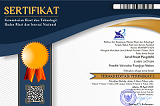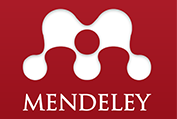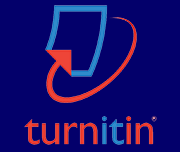Kawasan Rumah Pangan Lestari sebagai Upaya Peningkatan Ketahanan Pangan Masyarakat Pada Masa Pendemi Covid-19
Abstract
Keywords
Full Text:
PDF (Bahasa Indonesia)References
Adawiyah, C. R. 2011. Memperkokoh Ketahanan Pangan dengan Penganekaragaman pangan. Warta Penelitian dan Pengembangan Pertanian. Vol 33 (6). 5-7 pp.
Annisahaq, H., Nuhfil, H., Syafrial. (2014). Pengaruh Program Kawasan Rumah Lestari (KRPL) dalam Mendukung Kemandirian Pangan dan Kesejahteraan Rumah Tangga. Habitat. Vol 25 (1). 32-39 pp.
Ashari, Saptana, Tri, B. P. (2012). Potensi dan Prospek Pemanfaatan Lahan Pekarangan untuk Mendukung Ketahanan Pangan. Forum Penelitian Agro Ekonomi. Vol 30 (1). 13-30 pp.
Arifin, H. S. (2012). Manajemen Lasnkap Pekarangan bagi Kesehatan Pangan Keluarga. Bogor. IPB Press.
Badan Ketahanan Pangan. (2018). Petunjuk Teknis Optimalisasi Pemanfaatan Lahan Pekarangan Melalui Kawasan Rumah Pangan Lestari (KRPL).http://bkp.pertanian.go.id/storage/app/media/informasi%20publik/Pedoman/JUKNIS_KRPL_2018(2).pdf. Diakses pada tanggal 25 Mei 2020.
Cristianingrum, Gigih, I. P. (2020). Penerapan Sistem Kawasan Rumah Pangan Lestari (KRPL) di Desa Baru, Kecamatan Manggar, Kabupaten Belitung Timur. Ikraith-Abdimas. Vol. 3. No. 1. 89-94.
Faqih, A. 2015. Persepsi Anggota Kelompok Tani terhadap Peranan Kelompok Tani; Logika: Jurnal Ilmiah LEMLIT Unswagati Cirebon. Vol 15 (3). 72-89 pp.
Faqih, A. (2020). Pemberdayaan Perempuan Melalui Pemanfaatan dan Penataan Pekarangan. Abdimas Galuh. Vol 2 (1). 1-11 pp.
Kementerian Pertanian. (2011). Pedoman Umum Model Kawasan Rumah Pangan Lestari. Jakarta.
Mardiharini, M. 2011. Model Kawasan Rumah Pangan Lestari dan Pengembangannya ke Seluruh Provinsi di Indonesia. Warta Penelitian dan Pengembangan Pertanian. Vol 33 (6). 3-5 pp.
Nurjannah, R., Yulida, R., Sayamar, E. 2015. Tingkat Partisipasi Anggota Kelompok Wanita Tani dalam Program Model Kawasan Rumah Pangan Lestari (M-KRPL) di Desa Tualang Kecamatan Tualang Kabupaten Siak. Jom Faperta. Vol 2 (1). 1-13 pp.
Purwantini, T. B., Saptan, Sri, S. S. 2012. Program Kawasan Rumah Pangan Lestari (KRPL) di Kabupaten Pacitan: Analisis Dampak dan Antisipasi ke Depan. Analisis Kebijakan Pertanian. Vol 10 (3). 239-256 pp.
Saliem, H. P. (2011). Kawasan Rumah Pangan Lestari (KRPL):Sebagai Solusi Pemantapan Ketahanan Pangan. Kongres Ilmu Pengetahuan Nasional (KIPNAS). Jakarta.
Saptana, Sunarsih, S., Friyatno. (2013). Prospek Model Kawasan Rumah Pangan Lestari (MKRPL) dan Replikasi Pengembangan KRPL. Forum Penelitian Agro Ekonomi. Vol. 31 (1). 67-87 pp.
DOI: https://doi.org/10.21107/pangabdhi.v7i1.8635
Refbacks
- There are currently no refbacks.
Copyright (c) 2021 Holis Holis

This work is licensed under a Creative Commons Attribution-ShareAlike 4.0 International License.
Jurnal Ilmiah Pangabdhi by Universitas Trunojoyo Madura is licensed under a Creative Commons Attribution-ShareAlike 4.0 International License.













